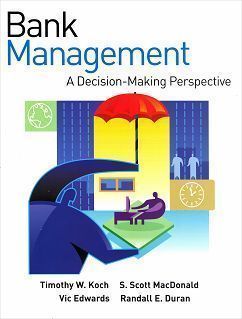書籍分類

Bank Management: A Decision-Making Perspective
作者:Timothy W. Koch, S. Scott MacDonald, Vic Edwards, Randall E. Duran
原價:NT$ 1,300
內容介紹 本書特色 目錄 作者介紹
- Description
Bank Management: A Decision-Making Perspective closely examines the impact of today’s changing, competitive environment on banks and banking services, as well as the entire financial services industry. It reflects the latest developments, from comprehensive regulatory updates to details of the many new programs that have arisen from recent financial crises. Whether you are already in the financial services industry or will be a future banking professional, you will gain a better understanding of the risks associated with loans and securities, the process of securitization, excessive leverage and inadequate liquidity, technology and operations, and also gain insights into the banking markets in Asia and the United States.
The book provides a framework for developing effective strategies for bank managers to maintain an effective balance between generating profits and taking risks. Its unique approach to presenting bank management from a decision-making perspective shows how bank managers make solid financial decisions. You will see how decisions in one area affect performance and opportunities in other areas. In addition, you will develop a solid foundation of understanding based on knowledge of the current issues that bank managers face. As you become familiar with basic financial models used to formulate decisions, you will better understand the strengths and weaknesses of data analysis.


